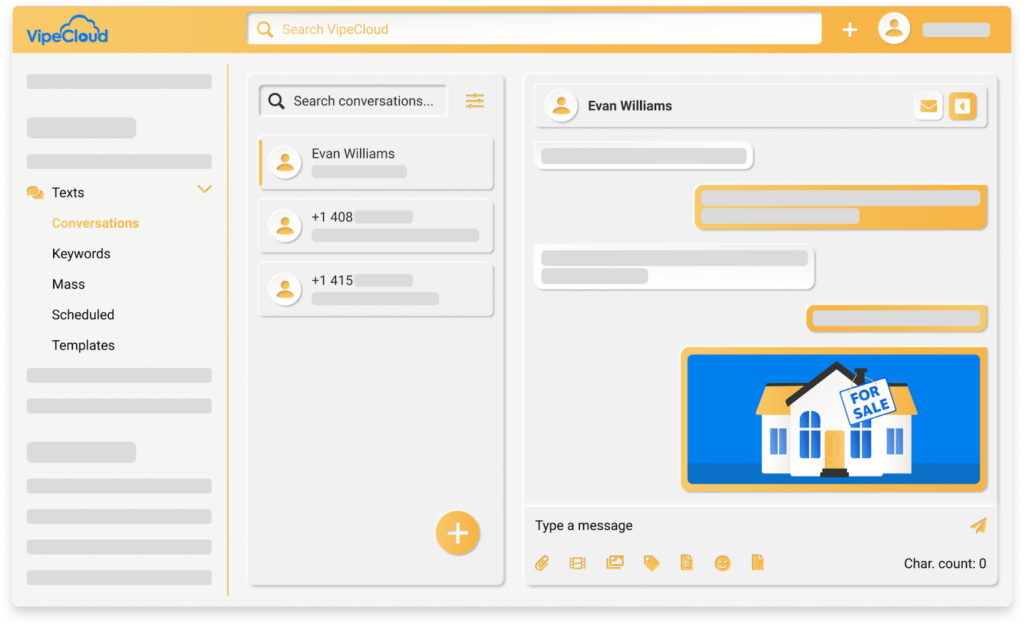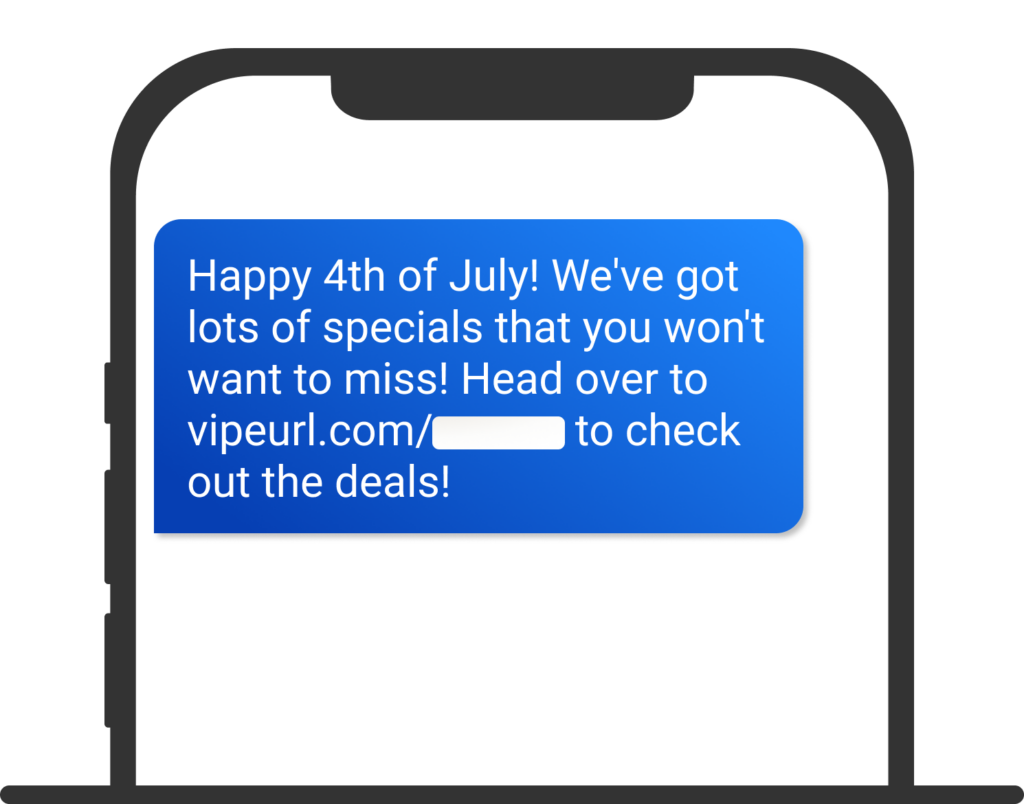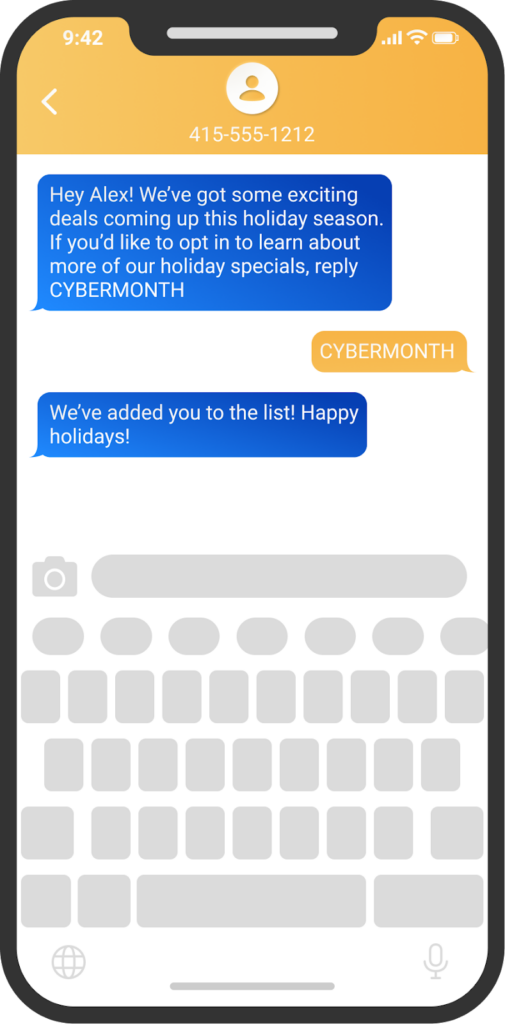Last updated on August 7th, 2023

Whether pitching to new prospects or re-engaging current opportunities, sales texting is a game-changer. Read this guide to learn how to use texting to land more deals.
Sales cycle length can vary based on the industry, the product, and the market.
Well-timed follow-up is one of the proven ways of speeding up the sales process.
This brings us to texting for sales – using text messaging to reach prospects faster and more consistently.
The best part is this can all be automated.
But not all businesses are using text to its full potential.
In this guide, we’ll explore the ins and outs of texting for sales and provide you with insights to convert more leads.
Table of Contents:
- What Is Text Selling?
- How can I use SMS In Sales Communications?
- How Do You Write A Sales Text Message?
- 13 Text Marketing Ideas for Small And Medium-sized Businesses
- 5 Best Practices In Sales Texting
- How To Measure Success With Sales Texting
- Common Mistakes to Avoid When Texting for Sales
- 2.5X Your Sales Texting Results Using VipeCloud

VipeCloud is the only Automation tool your small business needs to
be the hero to your customers.
With Email, Texting, Social, Suites, Chat, Stories, Video Email & Sign Up Forms fully built-in, we provide you with the perfect platform to grow your business.
15 Day Free Trial – Get started risk free. No CC needed.
What Is Text Selling?

Text selling is when you use SMS to pitch new prospects or nurture opportunities.
Texting for sales is about creating and sending short, direct messages to get customer attention faster.
So how effective is it?
Text gets higher open rates and more impressions than emails (98% of text messages get seen).

SMS messages commonly get clickthrough rates of 30.3%, with conversion rates of 9.1%.
It’s also cost-effective and scalable, making it an attractive option for small B2B businesses.
Success with text selling requires:
- Knowing your ICP (Ideal Client Profile) – who is your customer avatar?
- Having a good offer – What solution are you presenting to them?
- Writing good copy – How are you positioning or communicating your offer through text?
How Can I Use SMS In Sales Communications?
Text selling helps you:
- Re-engage old leads
- Send sales content
- Automate sales appointment reminders (this can help reduce no-shows)
- Offer new promotions
- Upsell (account managers can contact customers to upsell new add-ons)
One of the most efficient ways of using SMS for your sales communication is with your CRM software.
CRM (customer relationship management) is a system where you can streamline your sales process.
So if you’re CRM can connect with SMS software — or has an SMS feature — you can easily integrate sales texting tactics into your sales playbook.
From your CRM’s contact database, you can segment your leads using tags.
Then you can then send more relevant text messages to different segments of your list.
How Do You Write A Sales Text Message?
Here are 7 steps to craft high-converting sales texts.
Step #1. Determine Your Why (The End Goal)
Understanding the outcome you want from your sales texts helps you create the right message.
Are you:
- Looking to re-engage a prospect to hop on a call?
- Promote a new product or service?
- Sharing a piece of sales collateral?
Determining the purpose of each text also helps you measure how successful they are.
Say your goal is to book more meetings with new inbound leads from Google.
You can set a goal of X amount of meetings and make optimizations to your SMS campaign based on whether you reach that number.
Step #2: Determine Your Tone
A tone is the attitude behind the words you use in sales texts.
Tone should be determined by the market you’re speaking to.
For example, a salesperson texting department managers may text differently than when they text CEOs.
The right tone helps build rapport, trust, and reliability.
One element that goes into tone is the specific words you use.
Consider including your prospect’s industry jargon and even their name. This helps with familiarity, personalization, and trust.
Step #3: Introduce yourself
Briefly introduce yourself in initial messages.
Giving your name rather than just your company name matters a lot.
From a bigger picture, it shows a human element to the outreach.
Sometimes, leaving a link for your recipients to learn more about you works well too.
Step #4: Offer Value
Value drives action — without it, your message can fall on deaf ears.
What’s considered valuable depends on the prospect.
That’s why sales reps need to understand their ideal clients’ pain points and goals.
You can offer value in several ways:
- Give actionable advice
- Share a case study of a similar client
- Share a free, exclusively recorded training
- Give a special offer
Giving something valuable, especially free, can get your prospects to start climbing your value ladder.
The value ladder is when clients invest more in your company through time, thanks to more and more value you provide.
Giving free value also helps establish trust and authority, two critical components of a successful sale.
Step #5: Keep Words And Sentences Simple
Texts should be fewer characters than the typical email.
Why?
For starters, text communication is quick and to the point. People expect text messages not to be lengthy, which means too much jargon can backfire.
Instead, create sales text templates with simple and easy-to-understand words and sentences.
(Easy-to-understand sentences are usually on the shorter side.)
This ensures your texts aren’t misinterpreted as you send them to more and more people.
Which means simple text messages can boost your reply rates.
Step #6: End With A Call-to-Action
A strong call-to-action (CTA) tells your prospect what to do next.
It’s a critical component to success when using text for sales.
What they do next should be your goal from step #1.
This could be as simple as: “Reply YES for XYZ.”
Consider testing and optimizing different CTAs based on the results you’re seeing.
We recommend A/B texting different text templates and campaigns.
13 SMS Ideas for Small And Medium-sized Businesses

Looking for some quick sales SMS ideas?
Try these 13 campaign ideas.
1. Send a question as a follow-up when there’s no response from a prospect.
2. Ask for an email to send prospects a lead magnet.
3. Link to case studies that offer value.
4. Share the landing page for your event registration.
5. Alert a waiting list when availability opens up.
6. Send a scarcity alert text blast to inspire quick action.
7. Text special product or service offers.
8. Send an automated text asking for a customer review.
9. Send a happy birthday message to prospects you’re nurturing (save dates of birthdays in your CRM).
10. Send meeting reminders to increase show rates.
11. Create demand for a future product to grow a waiting list by sharing a customer story.
12. Link to a free training or webinar.
13. Send cart abandonment texts for online products.
5 Best Practices In Sales Texting
Before you start sending text messages to prospects and customers, do NOT forget these 5 table-stakes best practices.
1. Use A CRM
Customer relationship management systems put your text conversations all in one place.
This makes it easy to nurture leads and track conversations while eliminating the need for reps to use their phones and numbers.
A helpful feature is text keywords.

You can use text keywords to trigger an auto-responder or automatically add a contact to a list.
We recommend using SMS software that works with your CRM so you can centralize your data and communications.
And if you’re looking for a CRM with SMS capabilities, request a demo with VipeCloud to learn more about how your business can benefit from SMS.
2. Segment Your Audience
Speaking to the right customer avatar is critical to closing more deals through text. Consider segmenting your audience using CRM tags.
You can create tags for:
- New leads
- Hot leads
- Leads that have taken a certain action that proves interest
- Leads in a certain stage of your sales process.
Each lead type has different needs for them to close.
So you should consider creating different SMS campaigns for different types of leads.
3. Use Custom Fields For Personalization
Custom fields help you personalize your texts for better response rates.
(The last thing you want is the typical boilerplate follow-up message.)
With your CRM, you can create a custom field for personalization.
In this field, you can enter a personalized message for each contact.
Adding this custom field to your texts will help create a more relevant experience for your prospects.
Which is crucial if you’re planning on doing this at scale with mass text messaging.
Because who wants another generic text message from a company?
4. Follow-up
Remember:
The money is in the follow-up.
Following up makes all the difference in B2B sales.
There could be many reasons why your prospects haven’t gotten back to you (many of which are out of your control),
But what you can control is your follow-up cadence.
Following up increases the chances of each prospect seeing and engaging with your texts.
5. Split Test SMS Templates
Certain sales SMS campaigns are going to do better than others.
And this could be for a variety of reasons.
Which is why it’s essential to test different templates and campaigns to find what works.
You can start by A/B testing two templates for the same audience.
If your list is bigger, you can add two more templates to the mix to find a winner.
(Try not to draw any big conclusions until you’ve sent the same message to 10-20 different people.)
Then you can look at your CRM reports to determine the best-performing SMS messages.
How To Measure Success With Sales Texting
Tracking metrics with your sales texting tells you the effectiveness of your strategy. Here are some metrics to track when measuring success:
- Opt-in rate – The percentage of customers who opt into your SMS campaigns. This can tell you the quality of your lead magnet, landing page, or website copy.
- Clickthrough rate – The percentage of prospects who click on a text message link.
- Conversion rate – The percentage of customers who convert from text messaging.
- Response rate – The percentage of prospects or customers who respond to your text message.
- Opt-out rate – The percentage of customers who opt out of your SMS workflow (i.e., they reply “STOP.”
- Text to appointment rate – The percentage of prospects that go from a text conversation to a meeting.
Common Mistakes to Avoid When Texting for Sales
Here are some common mistakes that businesses should avoid when using text to sell new prospects or existing customers:
- Sending too many messages – Too many touchpoints can overwhelm your prospects and customers. Be sure to leave day gaps between your follow-ups and promotions.
- Not personalizing your messages – Customers are more likely to engage with personalized messages that relate to their interests and behaviors.
- Not honoring opt-out requests – Make sure you’re honoring opt-out requests from customers who no longer want to receive text messages from your business.
- Not providing value – Response and conversion rates decrease when there’s no value. Understanding your customer to provide valuable text communication is what fixes this issue.
Increase Sales With Texting Using VipeCloud
Sales texting is about leveraging a channel with high open rates to close deals.
Since most of your clients and prospects likely check their text messages actively, you can’t forget it as a sales tactic.
And fortunately, sales texting can be easy with VipeCloud.
VipeCloud gives you everything your need to send texts at scale or manually (1-to-1 or 1-to-many).
Want to see how VipeCloud’s SMS feature can work for your company? Request a demo, and we’ll be happy to give you a walkthrough.
Ready to give it a try? Claim your 15-day free trial when you sign-up today.

Leave a Reply